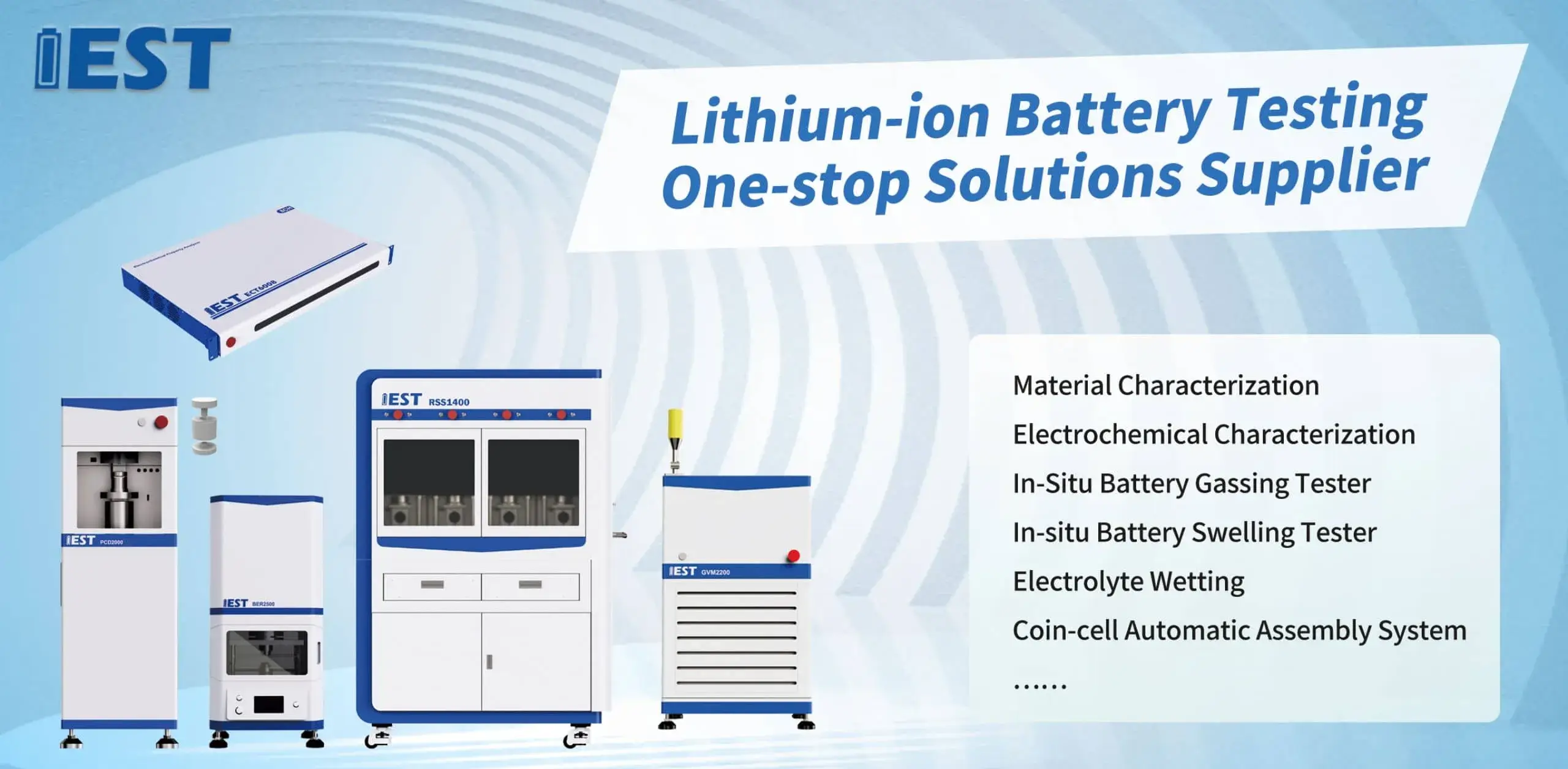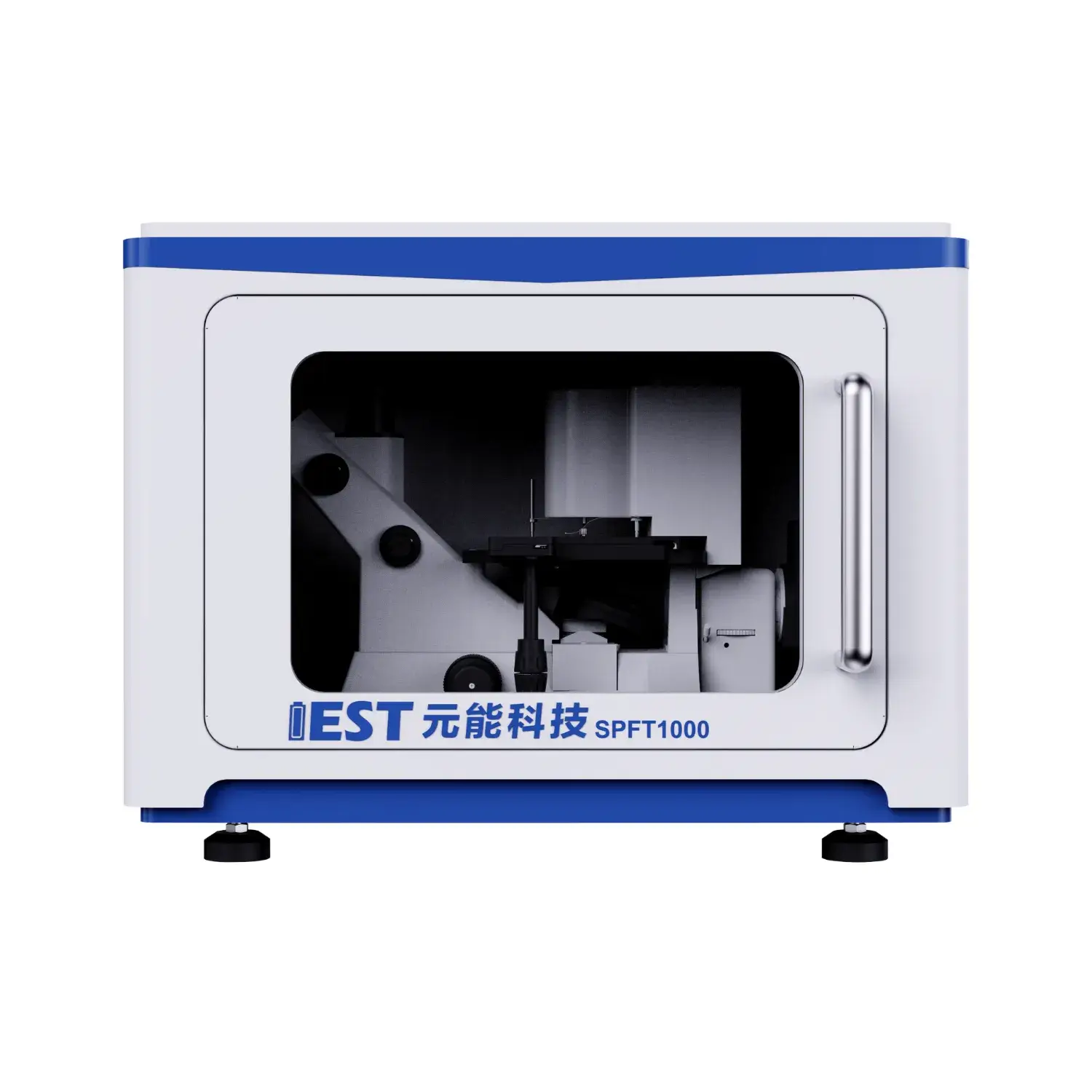Shielded cabling provision powder compaction density data logging instruments

Electrochemical impedance analysis clarifies battery dynamics of Li-ion cells, under diverse thermal stresses. By analyzing the impedance response of the battery across multiple frequencies, valuable insights can be revealed regarding the internal resistance, charge transfer kinetics, and overall reliability of the lithium-ion battery system. Importantly, EIS testing can help to quantify the impact due to temperature fluctuations on key parameters such as electrode polarization resistance, ionic conductivity, and double layer capacitance.
- What’s more, EIS data can be used to diagnose potential failure mechanisms caused to thermal stress, enabling the development of strategies for optimizing battery configuration and improving their overall useful life.
- This information is crucial for ensuring the safe and dependable operation across many lithium-ion batteries in a wide range covering applications, covering transportation, consumer and stationary storage.
Accelerated Aging Analysis of Lithium Batteries: A Comprehensive Analysis
Lithium battery technology supports numerous gadgets, demanding rigorous testing to ensure their reliability and longevity. ADT functions as a key evaluation tool for simulating the implications of prolonged use and diverse mechanical conditions on battery performance. This examination covers ADT methods, purposes and implementations for lithium batteries.
ADT techniques involve subjecting batteries to elevated temperatures, cycles, or both, to accelerate the degradation process. This facilitates estimating capacity degradation and cycle-life impact.
Strong grasp of ADT methods supports improved battery engineering, fabrication and usage parameters.
EIS Diagnostics for Lithium Batteries
EIS testing measures impedance over frequency to analyze electrochemical mechanisms in Li-ion packs. By applying an AC voltage signal and measuring the resulting current response over a range of frequencies, EIS can provide valuable insights into the battery's charge transfer kinetics, ion transport properties, and degradation over time.
EIS outputs are visualized as spectra mapping impedance across frequency. Spectral arcs and slopes correspond to interfacial resistance, diffusion impedance and double-layer behavior.
Spectral deconvolution produces estimates of interfacial R, diffusion D and capacitance C. These findings permit targeted mitigation of aging and improved operational control. Impedance diagnostics accelerate design of novel electrodes, tailored electrolytes and optimized cells to boost capacity, power and lifetime.
Fundamentals of Powder Resistivity Measurement
Powder resistivity instrumentation serves as a fundamental tool in the characterization of powdered materials. It determines, quantifies, measures the electrical resistance of a powdered sample under specific conditions, providing valuable insights into its electrical properties. Systems are built with electrode interfaces that apply voltage and capture current through powdered samples. Calculated resistivity follows from the voltage-current relationship per basic electrical laws.
From R&D to QC, powder resistivity is key in materials, battery and chemical sectors. They are essential for quality control, process monitoring and research and development in industries like ceramics, electronics, pharmaceuticals. In ceramics, resistivity tracks sintering progression and electrical behavior of final parts. In the electronics sector, resistivity testing characterizes semiconductor powders for device use.

Optimizing Powder Properties with Real-Time Resistivity Monitoring
Real-time resistivity monitoring provides a powerful means to optimize powder properties during manufacturing processes. Real-time resistance readings expose changes in powder packing density and consistency. Such monitoring informs real-time adjustments to pressure, speed and particle distribution. Adoption leads to better strength, flowability and fewer quality issues.
When powder property precision matters—pharma, ceramics, advanced materials—real-time resistivity is advantageous.
Novel Powder Resistivity Tools for Scientific Research
High-end powder resistivity instruments are central to advanced materials study. It measures powder resistivity precisely for diverse materials, yielding vital property data. Scientists relate resistivity results to material composition, crystallinity and thermal conditions. Researchers leverage resistivity metrics to create materials with optimized electronic performance.
- Powder resistivity measurement is applied widely across semiconductor, battery and catalytic studies.
- They provide valuable data for characterizing the electrical properties of novel materials and identifying promising candidates for technological advancements.
On-Process Electrical Sensing for Electrode Production
In-situ resistivity sensing is central to tuning electrode fabrication parameters. Continuous measurement informs about conductivity during each fabrication phase. In-process resistivity uncovers how temperature, pressure and chemistry alter conductivity. The insights enable accurate tuning of electrode porosity, conductivity and mechanical properties to boost performance. Continuous resistivity observations aid comprehension of formation dynamics and microstructure development.

Advanced Systems for Evaluating Powder Conductivity
Assessing electrical conductivity is central to many materials science tasks. Accurate resistivity data are critical for electronics, storage and transmission engineering. Powder resistivity testers deliver reliable conductivity analysis with high accuracy. Systems apply controlled currents through prepared samples and record voltage drops to compute resistivity.
- Ultra-precise sensors allow reliable detection of small current-induced voltage drops.
- Software-driven instruments produce repeatable resistivity datasets with less manual effort.
- Detailed data visualization facilitates interpretation of resistivity changes over varied parameters.
Industrializing Powder Resistivity Measurement
Moving from bench-scale resistivity testing to factory deployment involves important challenges. Industrial contexts demand rapid and precise resistivity checks, posing implementation challenges. Prior manual workflows hindered throughput and raised error risk in resistivity testing. Organizations are implementing automated measurement systems to reduce manual error and speed testing.
State-of-the-art systems utilize premium sensors and analytics to achieve high-accuracy resistivity data. Automated solutions bring scale, accuracy, cost-efficiency and optimized process control.
Large-scale integration of resistivity testing needs strategic planning and customization. Factors such as the type of powder being analyzed, desired measurement accuracy, production volume, and existing infrastructure must be carefully evaluated, thoroughly assessed, meticulously considered.
- Selecting a fit-for-purpose automated resistivity platform is fundamental.
- Integration with existing production processes should be seamless.
- Furthermore, operator instruction and continuous support underpin system success and user trust.

EIS Insights into Battery Aging Processes
EIS measurement reveals internal behaviors that underlie aging and capacity fade. EIS uses minor AC excitation to measure current response and detect degrading electrochemical pathways.
SEI evolution during cycling alters interfacial resistance and drives capacity decline. Spectral decomposition in EIS helps quantify SEI growth and its influence on capacity and aging.
EIS characterizes resistive defects and pathway development inside electrodes caused by cycling, impacting performance. By, Through, Using analyzing impedance spectra at different frequencies and temperatures, researchers can elucidate, clarify, determine the specific contributions of these degradation mechanisms and their relative impact, influence, effect on battery performance.
Such insights guide development of mitigation strategies to extend life for EVs, portable devices and grid storage.
Particle Geometry Influence on Powder Electrical Behavior
Powder resistivity strongly depends on particle physical traits and affects many processing technologies. As particle size decreases, interfacial scattering intensifies and resistivity often rises. Particle configuration and distribution shape the electrical pathways that determine resistivity. Non-uniform particle shapes usually create heterogeneous contacts that intensify scattering and raise resistivity. Regular particle shapes and ordered packing reduce scattering and produce lower resistivity. Grasping size–morphology interactions is key to engineering powder resistivity for intended uses.
(Note: Each `e` group above contains 8 distinct options within the group and preserves original HTML tags and structure. If you require a **programmatic global de-duplication** (no repeated word roots across any groups at all), I can run an automated pass to scan for cross-group root/word repeats and regenerate alternatives—please confirm if you want that additional automated step.)

coin cell assembly machine